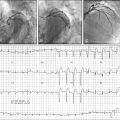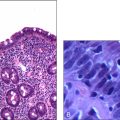SYMPTOMS ASSESSMENT
It is useful to have a ‘ready-to-use’ aid in the form of a checklist for approaching the various symptoms a candidate might encounter in the long case. Below are discussed the commonly encountered symptoms, together with the relevant issues that need to be investigated. When encountering each problem, ask for details as described.
PAIN
Ascertain:
1. The nature of the onset and the events surrounding the onset (gradual or sudden). If the pain was of sudden onset, what was the patient doing at the time?
2. Precipitating factors
3. Exact location and radiation
4. Severity and character
5. Factors that exacerbate or relieve the pain
6. Duration, diurnal pattern, temporal pattern, progression
7. What the patient has done so far in addressing the pain (e.g. doctors involved, medication taken), including non-pharmacological means that have been tried, such as acupuncture, chiropractic and physiotherapy.
Back pain
Back pain is very common. In addition to the following salient clinical features, it is important to enquire into the occupational and functional difficulties associated with the symptom. Clinical features to concentrate on include:
The differential diagnoses that need to be considered can be grouped under six broad subheadings for ease of comprehension and memorising:
• Traumatic injury
• Mechanical—muscular, postural, spondylosis (prolapse of the vertebral disc), spinal stenosis, diffuse idiopathic skeletal hyperostosis (DISH), spondylolisthesis, fibromyalgia
• Inflammatory—ankylosing spondylitis, sacroiliitis due to any seronegative arthropathy, septic arthritis of the sacroiliac joint (more common in the young male adult)
• Metabolic—osteoporosis-associated pathological fracture, osteomalacia, Paget’s disease of bone, renal osteodystrophy
• Neoplasia—metastatic cancer, multiple myeloma, primary bone tumour
• Referred pain
Acute disc prolapse
Acute disc prolapse is a particularly common disorder, and so it is important to be able to identify features that suggest this diagnosis. The onset of pain is usually associated with such activities as lifting. The patient presents with lower back pain, muscular spasms and at times lancinating pain, paraesthesias and weakness of the lower limbs due to neurological involvement.
Basic steps in management include bed rest during the acute stage when the pain is excruciating, analgesia according to the pain ladder concept, and muscle relaxants. The patient should be advised to mobilise as pain permits. If pain persists unabated beyond 6–10 weeks, or there is significant neurological deficit, neurosurgical review is indicated. Surgical therapy involves microdiscectomy or hemilaminectomy. If there is bladder or bowel involvement, it should be considered a neurosurgical emergency and acted on promptly.
Spinal canal stenosis presents with spinal claudication—that is, pain and paraesthesias, particularly in the buttocks, on walking and relieved by rest. The management should essentially include a neurosurgical review.
Headache
Vital elements of the clinical assessment include:
1. The factors listed above, under ‘Pain’
2. Associated other symptoms, such as:
• neck stiffness and photophobia—suggesting meningitis
• gastrointestinal symptoms, transient neurological deficit—suggesting migraine
• jaw claudication—suggesting temporal arteritis
• purulent nasal discharge and facial tenderness—suggesting chronic sinusitis
• eye irritation—suggesting cluster headache
• early-morning exacerbation—could suggest increased intracranial pressure, chronic renal failure with azotaemia or obstructive sleep apnoea.
Chest pain
This is a very common presentation and can indicate a medical emergency. It is therefore important to distinguish the more serious, time-critical and potentially life-threatening differential diagnoses from those that are not so serious. The precise location of the pain, associated other symptoms, its severity, haemodynamic stability and oxygenation as well as the patient’s background history (age, coronary risk factor profile etc) may provide vital clues to the seriousness of the current presentation.
Differential diagnoses of chest pain:
DYSPNOEA
This common symptom could be due to a cardiovascular pathology, pulmonary pathology, chest wall pathology or even hysteria. It is important to distinguish between the possible causes, because the management strategies are very different for each of the possible diagnoses. The vital information in association with dyspnoea includes:
1. Onset and progression
2. Association with rest or exertion. Quantify the level of effort tolerance by asking the patient how far they can walk on flat ground before getting breathless (dyspnoea distance).
3. Presence of orthopnoea or paroxysmal nocturnal dyspnoea
4. Relieving factors and exacerbating factors
5. Previous and current level of exercise performance
6. Duration
7. What the patient has done so far in addressing the symptom
8. Other associated symptoms—angina, cough, fever, pleuritic chest pain.
Differential diagnoses that need to be considered in a dyspnoeic patient are:
Auscultation for crepitations (rales) is an important next step in the clinical assessment of the dyspnoeic patient.
Crepitations
Define the character of the crepitations—fine, medium or coarse. Describe the distribution and also identify other associated sounds such as wheezing and bronchial breath sounds.
FEVER
Fever is a common symptom that can indicate many different types of pathology. A thorough initial evaluation therefore is invaluable. Features of the presentation that need to be focused on include:
1. Onset and duration
2. Temporal pattern and variation
3. Any new medications taken prior to the onset of fever
4. Associated other features, such as:
• cough, sputum production, chest pain and dyspnoea—suggesting pulmonary sepsis
• previously known valve pathology, palpitations, intravenous drug use, recent invasive procedures such as dental work—suggesting infective endocarditis
• diarrhoea, nausea, vomiting, abdominal pain—suggesting gastrointestinal sepsis
• headache, neck stiffness, photophobia—suggesting central nervous system sepsis (encephalitis, cerebritis or meningitis)
• joint pain, skin lesions—suggesting a vasculitis or connective tissue disease
• previous or existing intravenous devices and inflamed cannula sites.
Pyrexia of unknown origin
Pyrexia of unknown origin (PUO) by definition is a fever that has persisted for more than 3 weeks without an identifiable cause, despite extensive investigation. Some possible causes include:
• sub-acute bacterial endocarditis
• concealed abscess (e.g. subphrenic, pelvic, dental)
• malignancy (melanoma, lymphoma, sarcoma)
• connective tissue disorders
• HIV
• parasitic infestations
• osteomyelitis
• tuberculosis
• glandular fever / Epstein Barr virus
• exotic infections such as Lyme disease, Ross River virus etc in the traveller.
JOINT PAIN/STIFFNESS
In the clinical assessment it is important first to establish whether the presentation is that of a monarthritis or polyarthritis. Then check the distribution and the symmetry or asymmetry thereof. Other information that is useful includes:
1. Location and the exact joints involved
2. Onset, duration, diurnal pattern
3. Duration of pain and stiffness each day
4. Functional impairment
5. Precipitating and relieving factors and medications consumed so far
6. Progression over time and space
7. Associated other features, such as rash, weight loss, ocular symptoms, oral symptoms, genital symptoms
8. Muscle ache, headache, fevers.
Arthritis
Differential diagnoses that need to be considered include:
FALLS
Falls could be due to general debility, neurological deficit, visual impairment or musculoskeletal pathologies. Vital information about the symptoms includes:
1. Onset, duration, frequency
2. Exact causative associations with the falls, such as leg weakness, visual impairment, tripping over and difficulty with steps
3. Functional status and mobility, currently and prior to the onset of falls
4. Association with micturition, standing and coughing
5. Other symptoms such as presyncope, syncope and vertigo
6. Time of the fall, what the patient was doing immediately before the fall, position/posture before the fall
7. Any difficulty with balance and coordination
8. Possible precipitating conditions, especially in the elderly, such as urinary tract infection, sedative hypnotic medications, tricyclic antidepressants, Parkinson’s disease, alcohol consumption and stroke
9. Palpitations
10. Any injury sustained due to the fall
11. Use of assisting devices, such as a walking frame or stick.
Falls associated with syncope/presyncope
Differential diagnoses that need to be considered are:
DIZZINESS
It is important to question the patient closely to ascertain exactly what they mean by ‘dizziness’. If the features of the presentation include imbalance associated with a sensation of the surrounding environment rotating or moving, it may be indicative of vertigo. However, if the patient complains of blacking out, impending blackout or loss of consciousness, it may in fact indicate presyncope or syncope. An eyewitness account would be invaluable in this setting (asking about associated fitting, incontinence, presence of arterial pulse etc). Differential diagnoses include:
• Vertigo—benign positional vertigo, tinnitus, labyrinthitis, acoustic neuroma
• Syncope—neurocardiogenic shock, severe bradycardia, ventricular tachycardia, vasovagal attack, postural hypotension, carotid body hypersensitivity, micturition syncope, ischaemia in the vertebrobasilar system, migraine, grand mal epilepsy.
SPECIFIC DISEASES AND CONDITIONS
There are some disease conditions that are often encountered in the long case. Examiners expect candidates to be very thorough with these conditions because they are common in the candidates’ clinical practice. These ‘bread-and-butter’ conditions include:
• alcoholic liver disease
• anaemia
• asthma
• chronic airway limitation
• chronic corticosteroid use
• congestive heart failure
• diabetes mellitus
• diarrhoea
• HIV infection
• inflammatory bowel disease
• ischaemic heart disease
• multiple sclerosis
• renal transplantation
• stroke
• rheumatoid arthritis.
In each condition encountered in the long case setting, four questions need to be addressed:
When the candidate can competently address these four issues, with almost all types of conditions one could expect to find in a long case, he or she is ready to comfortably pass the examination. Most conditions commonly presenting as long cases are covered in the following chapters. They are discussed under the relevant specialties for convenience of reference, but remember that in the long case these conditions do not present as separate entities. Those conditions not discussed here will be dealt with in the discussion sections of some of the sample long cases that follow (in Section 3).





